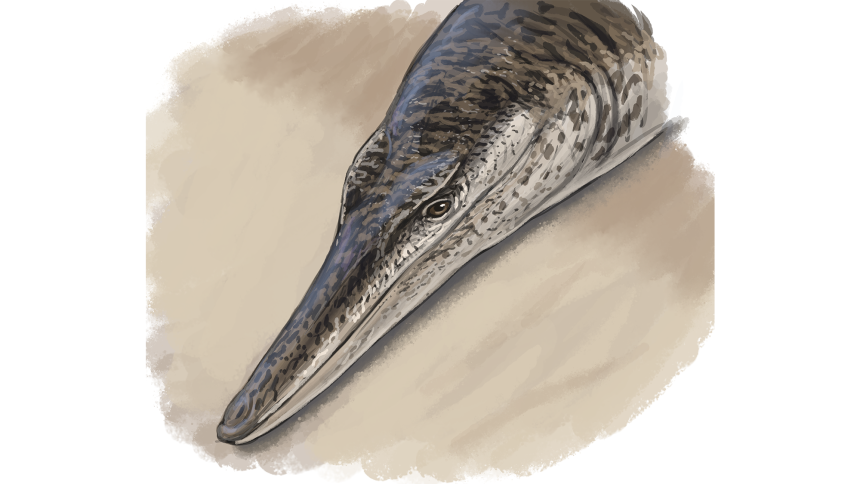
Rediscovered Fossils Reveal Insights into an Ancient Marine Species
A remarkable collection of fossils, dating back 135 million years and once believed to be lost during World War II, has been located and thoroughly examined. In research published on July 18 in the Journal of Systematic Paleontology, a group of international scientists from Germany and the UK identified the well-preserved skull and initial neck vertebrae belonging to what they have named Enalioetes schroederi. While paleontologists classify these remains as a newly identified species of ancient marine crocodile, it is now clear that these creatures bore a closer resemblance to modern-day dolphins than traditional reptiles.
The Metriorhynchidae Family: Unique Adaptations for Marine Life
During the Middle Jurassic through Early Cretaceous epochs, various species within the crocodyliform family Metriorhynchidae thrived in oceanic environments. Distinguished by their unique anatomy, metriorhynchids differed significantly from contemporary heavy-bodied crocodiles; they were equipped with flippers, tail fins, and smooth skin free from scales. These adaptations suggest that metriorhynchids were adept swimmers capable of pursuing swift prey such as fish or squid. Some variants developed notably formidable serrated teeth for consuming other marine reptiles.
[Related:[Related:Meet Benggwigwishingasuchus eremicarminis – A Surprising Relative of Crocodiles.]
The Journey of Discovery: From Loss to Rediscovery
Although most metriorhynchid species existed primarily during the Jurassic period, some—including E. schroederi—continued evolving through into the Cretaceous era. However, confirming details about this fascinating creature was only achieved recently due to its intriguing history intertwined with loss and rediscovery spanning over a century.
The fossils were first unearthed around 1916 by an architect named D. Hapke near Hannover; he subsequently entrusted them to Henry Schroeder at Berlin’s Prussian Geological Survey. Initially thought to belong to an unclassified ichthyosaur type, further examination revealed they belonged instead to a distinctly different organism.
Despite hopes for clarity surrounding these fossils’ fate following WWII destruction in Berlin, decades later experts discovered that Schroeder had returned them to Hapke’s family lineage after all—the same family had transferred them over time into Minden Museum in Western Germany where they remained hidden for years until rediscovered by researchers from Naturkunde-Museum Bielefeld along with their University of Edinburgh counterparts who initiated comprehensive studies on them including advanced CT imaging technology applied onto an intact three-dimensional specimen.
Insights Gleaned Through Advanced Analysis
Sven Sachs leading this research effort mentioned on August 9: “[W]e gained significant insights regarding internal anatomical structures within these marine reptiles remarkably well-preserved conditions allowed us reconstructing unique cavity shapes right down even inner ear morphologies.” This fresh understanding emphasizes how metriorhynchids underwent evolutionary transformations yielding “body plans radically distinct compared other types.” This included enhanced ocular sizes expanding beyond those already large among crocodylians plus densified bony inner ear formations indicating potentially superior swimming capabilities relative more primitive relatives according Mark Young—a collaborator studying developmental patterns at Edinburgh’s School GeoSciences—suggesting “E.schroederi‘s being likely adept swimmers” amid their realms!
By recognizing it as novel species entirely original contributions attributed naming E.schroederi, honor awarded during initiatory descriptions rendered earlier concerning archaic entities before remaining products veiled mystery considerable span duration spanning decades long elapsed period enduring concealment thereafter possible unveiling points culmination advances exploration unearth mysteries could precious study regions past climatic influences our planet endured!
The content is originally sourced from Popular Science.





